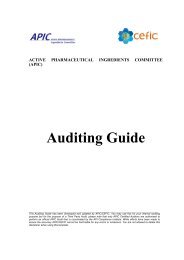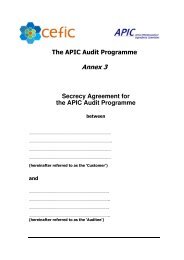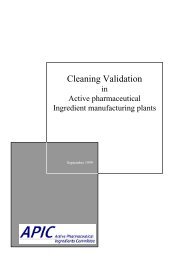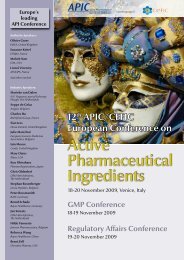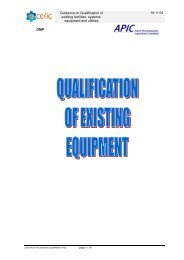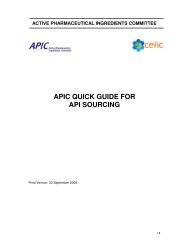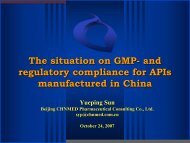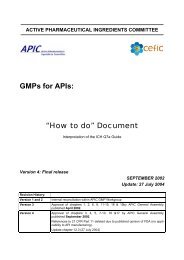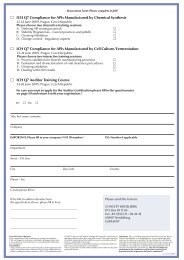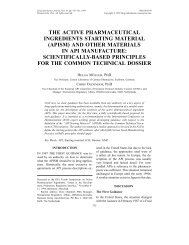Quality Management System for Active pharmaceutical
Quality Management System for Active pharmaceutical
Quality Management System for Active pharmaceutical
Create successful ePaper yourself
Turn your PDF publications into a flip-book with our unique Google optimized e-Paper software.
<strong>Quality</strong> <strong>Management</strong> <strong>System</strong> - integrating GMP into ISOChapter 2: <strong>Quality</strong> systemPrincipleThe <strong>Quality</strong> system - in the <strong>for</strong>m of organisational structure, procedures, processes andresources needed to implement the quality policy - should be described in a quality manual.The quality manual should cover relevant EN ISO 9001 and GMP requirements, describe thedocumentation hierarchy and indicate how the quality system is managed.The need <strong>for</strong> quality planning is an important feature of the QMS. It requires that adequateconsideration is given to an activity be<strong>for</strong>e implementation, thereby reducing the risk and costof failure.2.1 <strong>Quality</strong> manual2.1.1 The quality manual is the master quality document and, as such, should provide anoutline of, and directory to, the quality system. It should cover relevant ISO 9001and GMP quality management requirements2.1.2 The quality manual should be positioned at the head of the documentation hierarchy,and be supported by other document groups such as policies, Guidelines, procedures(such as Standard Operating Procedures) etc.2.1.3 The quality manual should be used as a basis <strong>for</strong> auditing the per<strong>for</strong>mance of theQMS.2.1.4 The quality manual should be written in a clear, concise and user-friendly style sinceit will be read, and needs to be understood, by all grades of staff. It should also beopen to inspection by external auditors and (possibly) by customers.2.2 <strong>Quality</strong> system procedures2.2.1 The quality system should ensure that all quality related activities are documentedand carried out in a systematic and approved manner.2.2.2 Duplication of content between documented procedures (e.g. operating proceduresversus training modules) should be avoided in order to minimise the risk ofdocumentation overload.2.2.3 Procedures should, where appropriate, address control of the horizontal (crossfunctional)communication interfaces as well as vertical communication in theorganisation.14



